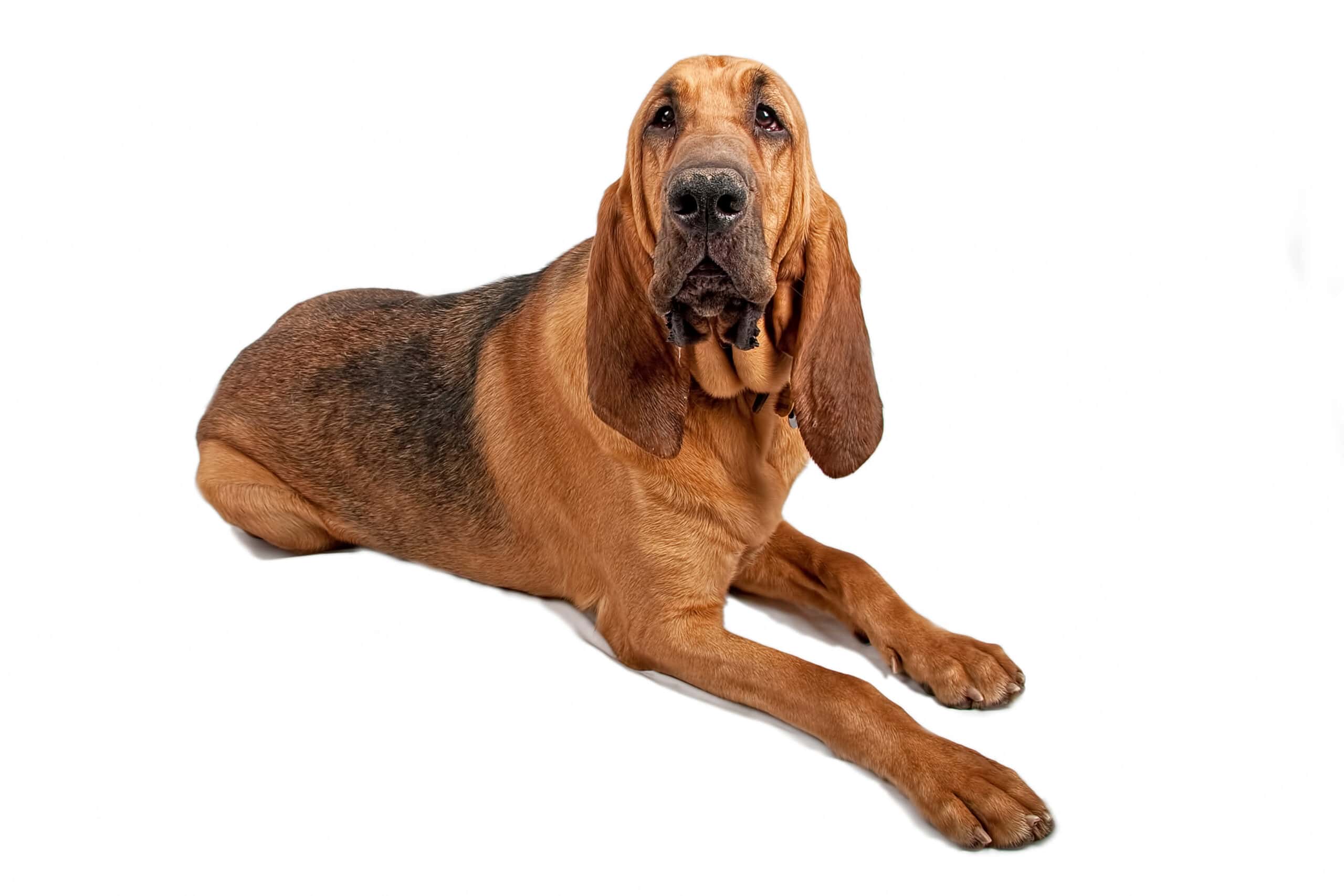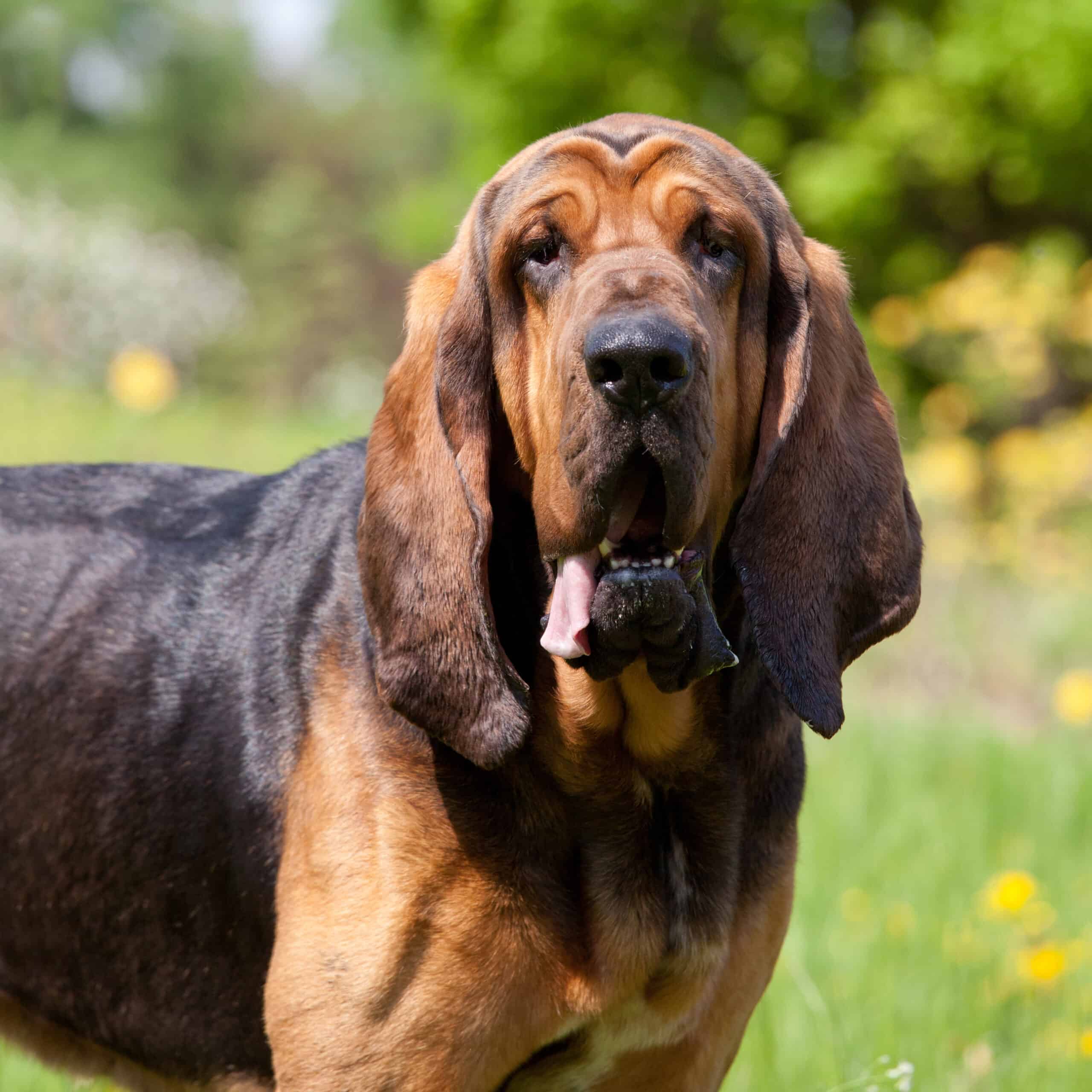If you’re considering adding a Bloodhound to your family, one of the questions you may be wondering is whether or not they shed.
The answer is yes, Bloodhounds do shed, but not as much as you might expect.
According to the American Kennel Club, they are considered seasonal shedders, meaning they shed the most during the change of seasons.
Bloodhounds are a large breed of dog known for their incredible sense of smell and tracking abilities.
They were originally bred for hunting and tracking, but are now commonly used by police departments and law enforcement agencies.
Despite their size and hunting background, Bloodhounds are known for their affectionate and gentle personalities.
However, they can also be stubborn at times, so early and consistent training is important.
Physical Characteristics

Bloodhounds are a large breed of dog known for their distinctive appearance and incredible sense of smell. They have a muscular build and can grow up to 27 inches tall at the shoulder.
Bloodhounds can weigh anywhere from 80 to 110 pounds, with males typically being larger than females.
One of the most recognizable features of a Bloodhound is its loose skin and wrinkles, especially around the face and neck.
This is due to the breed’s history as a scent hound, where their loose skin helped them to trap and hold onto scents.
Bloodhounds have a short, dense coat that comes in a variety of colors, including black and tan, liver and tan, and red.
Their coat is not thin, but it is not so thick that it requires excessive grooming. Bloodhounds are moderate shedders, with shedding being most noticeable during the change of seasons.
Another distinguishing feature of the Bloodhound is their droopy ears, which can be up to one-third the length of their body.
These long ears help to collect and funnel scents towards their nose, making them one of the best tracking dogs in the world.
Overall, Bloodhounds have a friendly and gentle disposition, making them great family pets.
Their unique physical characteristics and incredible sense of smell make them a beloved breed among dog lovers.
Shedding and Grooming
As mentioned earlier, Bloodhounds have short coats and are considered to be moderate shedders.
They shed seasonally, which means that you can expect to see more shedding during the Fall and Spring months.
To manage shedding, it is recommended that you brush your Bloodhound’s coat daily. This will help distribute natural oils and remove dead hair, which can help keep your dog’s coat healthy and shiny.
In addition to daily brushing, weekly grooming can help keep your Bloodhound’s coat looking its best. This can involve trimming nails, cleaning ears, and brushing teeth.
Bloodhounds have relatively low grooming requirements, and their coats are easy to care for.
However, it is important to note that Bloodhounds have a natural oil on their skin that helps keep their coat healthy.
Over-bathing or using harsh shampoos can strip this natural oil and cause your Bloodhound’s skin to become dry and itchy.
When grooming your Bloodhound, it is important to use gentle, dog-specific shampoos and conditioners.
This will help keep your dog’s coat clean and healthy without stripping away natural oils.
If you notice any signs of dry skin or itching, it may be a sign that you are bathing your dog too frequently or using the wrong type of shampoo.
Health and Care
As a Bloodhound owner, it’s essential to ensure that your canine friend is healthy and well-cared for. Here are some things you should know about Bloodhound health and care:
Care for Skin Folds
Bloodhounds have wrinkles and skin folds that require special care. These areas can trap moisture and bacteria, leading to skin infections and dermatitis.
Regular cleaning and drying of skin folds can help prevent these issues. You can use a damp cloth or baby wipe to clean the folds and then dry them thoroughly.
Watch for Health Problems
Bloodhounds are generally healthy dogs, but they are prone to certain health conditions. These include hip dysplasia, bloat, and ear infections.
Regular visits to the veterinarian can help catch these issues early and prevent them from becoming more severe.
Maintain Body Temperature
Bloodhounds are sensitive to extreme temperatures. They can overheat quickly in hot weather and get cold easily in cold weather.
It’s essential to keep your Bloodhound in a comfortable environment and avoid leaving them outside for extended periods in extreme weather conditions.
Provide Proper Nutrition
High-quality dog food is essential for your Bloodhound’s health. Bloodhounds require a balanced diet rich in nutrients to maintain their health.
You should feed your Bloodhound a diet that is appropriate for their age, size, and activity level. Consult with your veterinarian for recommendations on the best diet for your Bloodhound.
Adopting a Bloodhound
If you’re considering adopting a Bloodhound, there are a few things you should know to prepare for your new best friend.
Bloodhounds can make great pets for families, but they do require a certain level of care and attention.
First, it’s important to consider whether a Bloodhound is the right breed for you.
Bloodhounds are known for their strong sense of smell and tracking abilities, which can make them great hunting dogs.
However, they also require plenty of exercise and mental stimulation to keep them happy and healthy.
As an owner, you’ll need to be prepared for the shedding that comes with owning a Bloodhound.
While they don’t shed as much as some other breeds, they do shed seasonally, so you’ll need to be prepared to groom them regularly and keep up with any shedding.
It’s also important to prepare your home for your new pet. Bloodhounds are large dogs, so make sure you have plenty of space for them to move around.
You’ll also need to make sure your home is safe for your new pet, with no dangerous objects or substances within reach.
Finally, it’s important to be an active and engaged pet owner. Bloodhounds thrive on attention and socialization, so make sure you have plenty of time to spend with your new pet.
Regular walks, playtime, and training sessions can all help keep your Bloodhound happy and healthy.
Frequently Asked Questions
What is the shedding frequency of Bloodhounds?
Bloodhounds are seasonal shedders, which means they shed the most during the change of the season. You can expect to see some hair around the house, especially during Spring and Fall.
How much hair do Bloodhounds shed?
While Bloodhounds do shed, they do not shed as much as one might think. The American Kennel Club classifies them as moderate-to-high shedders.
However, the amount of hair they shed varies from dog to dog.
What is the best way to manage shedding in Bloodhounds?
Regular grooming is the best way to manage shedding in Bloodhounds. Brushing their coat once or twice a week will help remove loose hair and prevent mats and tangles.
Additionally, bathing your Bloodhound every three months will help keep their coat healthy and shiny.
Is regular grooming necessary for Bloodhounds?
Yes, regular grooming is necessary for Bloodhounds. Grooming not only helps manage shedding but also helps keep their coat healthy and free of tangles and mats.
Additionally, grooming allows you to check for any skin issues or parasites.
What are some tips for managing shedding in Bloodhounds?
Aside from regular grooming, there are other tips you can follow to manage shedding in Bloodhounds.
For example, providing your Bloodhound with a healthy diet and plenty of water can help keep their coat healthy. Additionally, vacuuming your home regularly can help remove any loose hair.
Are there any products that can help reduce shedding in Bloodhounds?
There are several products available that can help reduce shedding in Bloodhounds. For example, using a deshedding tool can help remove loose hair and prevent shedding.
Additionally, using a high-quality shampoo and conditioner can help keep their coat healthy and reduce shedding.

